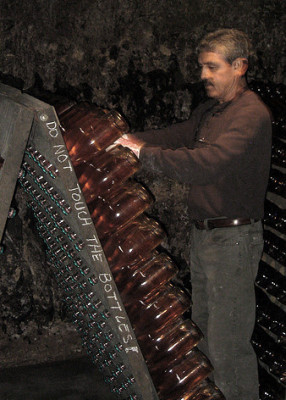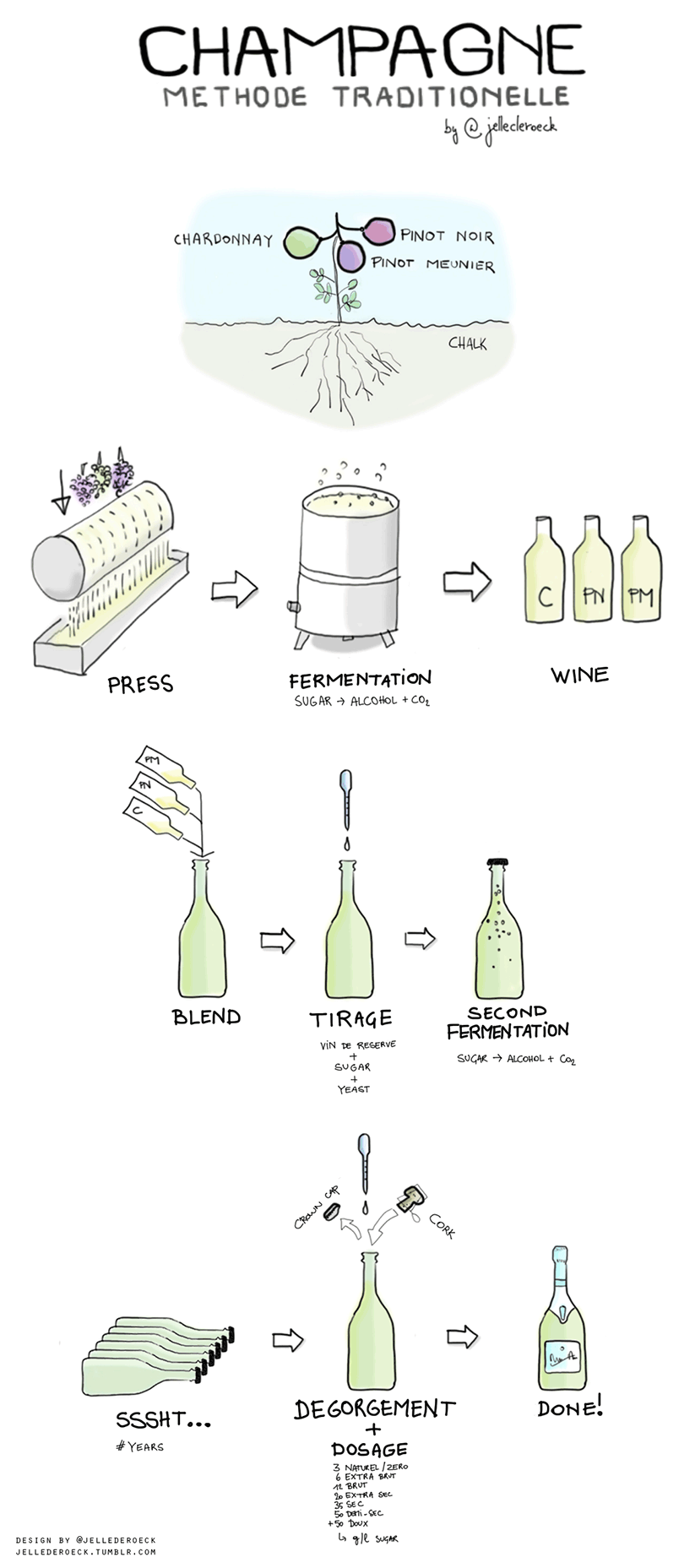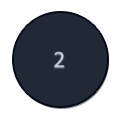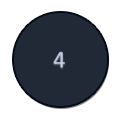Bubble finesse
The texture and quality of bubbles in sparkling wine.
For the longest time I thought that sparkling wine was a half-assed wine product. At the time my justification for this wasn’t totally unfounded: Sparkling wine is served in a wimpy glass and perceived only as a celebratory social lubricant. Nobody (that I knew) drank sparkling wine on a regular basis or paired it with food. It wasn’t until a friend of mine, working at K&L Wine Merchants, helped me see it differently. He told me to focus on the bubbles as part of the taste and texture. It took some getting used to, but after that I realized the importance of good bubbles.
What makes great sparkling wine?
Discover the top 4 ways sparkling wine is made and how each technique affects bubble finesse. I say “sparkling wine” because there’s so much more than just Champagne.
How Champagne is Made
I say Champagne because most people forget there are many types of sparkling wines including Cava and Crémant d’Alsace. There are 4 common methods for make sparkling wine, they are:
- Classic Method
- (aka Méthode Champenoise, Metodo Classico, Méthode Traditionelle) Used for Champagne, Cava, American sparkling wine, Italian Franciacorta, etc.
- Charmat Method
- (aka Metodo Italiano, cuvée close) Used on Prosecco, Lambrusco and other lightly sparkling wines.
- Tank Method
- Used for most small format sparkling wine (187 ml etc)
- Carbonation
- Carbonated with the addition of CO2. Not common, usually a low quality base-model wine
Step 1: The Base Wine
The base wine for most sparkling wines tastes much more tart than standard still wines. This is because grapes destined for sparkling wines are picked earlier than standard still wines. Base wines are made in a process similar to white wines.
Step 2: Adding Sugar and Yeast (aka ‘Liqueur di Tirage’)
This is the primary difference between still and sparkling wines. In this step, additional yeast and sugar is added to the base wine in a closed environment. As the yeast eats the sugar it releases carbon dioxide. Since the extra carbon dioxide has nowhere to go, it pressurizes the container and carbonates the wine.
From Brut to Doux: Learn the sweetness levels in Champagne
What Are The Best Champagne Bubbles?
If you talk to any self-respecting Valdobbiadene Prosecco producer they will swear by the Charmat method. In Champagne, the winemakers believe that nothing is more dignified than the time-intensive Méthode Champenoise. The truth is, neither is better, but both have their pros and cons.
- Longer Lasting Bubbles
- Generally speaking, the Classic Method produces the longest lasting bubbles.
- Bigger Bubbles
- The Charmat Method has a way of making bigger more explosive sparkling wines. This also is the case for carbonated wines.
- Itty-Bitty Bubbles
- The Classic and Tank Method both have been known to produce some very small ‘bubbled’ sparkling wines.
- Vintage Champagne
- As sparkling wines age they become less acidic and less bubbly. The trade-off is that the vintage sparkling wines have fascinating tertiary smells like hazelnut and brioche.
Step 3: Aging on the Lees and Riddling

Lees
Lees are flecks of dead yeast cells left in a bottle, barrel or tank of fermented wine. A wine that is aged ‘sur lees’ (‘on the lees‘) will taste a little bit richer on the mid-palate (i.e. in the middle of your tongue). This is a technique commonly practiced on both white and sparkling wines.
Riddling
Riddling is the act of rotating a sparkling wine bottle upside down over a period of time. The purpose of riddling is to slowly collect the dead yeast bits into the neck of the wine bottle. Riddling is now commonly done by machine, but it used to be the world’s lamest job. Imagine yourself in a cold cellar surrounded by thousands of bottles and turning each one 90 degrees. Every day.
Step 4: Disgorge and Dosage
Disgorgement

Once all the crud is collected into the neck of the bottle, the neck is put headfirst into frozen brine or liquid nitrogen bath. Freezing the neck also freezes this crud of lees into a cube. When the cap is popped off prior to dosage, the cube of lees flies out and leaves clear sparkling wine in the bottle.
Dosage
After disgorgement, one last mixture of wine and sugar is added for flavor (and to fill the partially empty bottle). This last step is called dosage or liqueur d’expédition. Depending on the sweetness level of Champagne you buy (from Brut Nature or Doux) you can have no sugar to a few tablespoons per bottle.

Want to see how all the major types of wines are made? Check out Jelle de Roeck’s other illustrations about how wine is made:





